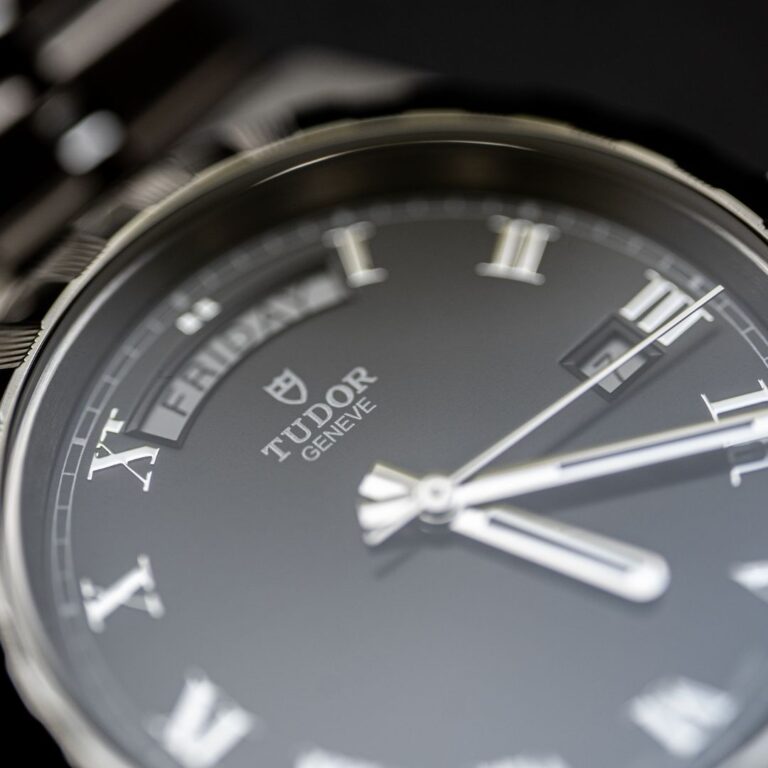Tudor, a subsidiary of Rolex, stands as a symbol of affordability combined with the excellence of Swiss watchmaking. Known for its robust timepieces that deliver Rolex-level reliability at a more accessible price, Tudor has carved out a significant place in the luxury watch market. This article explores the history of Tudor, its relationship with Rolex, its evolution, and its estimated net worth within the competitive watch industry.
The Origins of Tudor
Tudor was founded in 1926 by Hans Wilsdorf, the visionary behind Rolex. Wilsdorf’s objective was to create a brand that offered the same level of durability and precision as Rolex but at a lower price point, making luxury watches accessible to a broader audience.
In 1946, Wilsdorf officially established Montres TUDOR SA. He positioned Tudor as a companion brand to Rolex, with timepieces built using Rolex cases and bracelets but equipped with movements sourced from third-party manufacturers, such as ETA. This strategic approach allowed Tudor to maintain high-quality standards while keeping costs competitive.
Milestones in Tudor’s History
- 1940s-1950s: The Birth of Iconic Models
- The launch of the Tudor Oyster in 1947 marked the brand’s early success, offering waterproof functionality similar to Rolex’s iconic Oyster case.
- In the 1950s, the Tudor Oyster Prince debuted, featuring self-winding movements, solidifying Tudor’s reputation for reliability and innovation.
- 1960s-1970s: Tool Watches for Professionals Tudor gained traction with military organizations and professional divers:
- Tudor Submariner: Introduced in 1954, this diver’s watch was used by the French Navy and other military forces, becoming a hallmark of ruggedness and reliability.
- The brand expanded into tool watches for explorers, divers, and military personnel, reinforcing its identity as a professional-grade timepiece.
- 1980s-1990s: Decline and Dormancy During the quartz crisis, Tudor struggled to maintain its relevance amid the influx of inexpensive quartz watches. The brand reduced its presence in key markets, focusing on a few models with limited innovation.
- 2000s: Revival and Reinvention
- Under the Rolex umbrella, Tudor underwent a major revival in the early 2000s. With the release of the Tudor Heritage Chrono in 2010, inspired by the 1970s Tudor Monte Carlo, the brand reintroduced itself as a player in the vintage-inspired luxury watch segment.
- The Black Bay collection launched in 2012 was a game-changer, combining classic Tudor design elements with modern technology. It remains one of the brand’s most popular lines.
- 2015-Present: In-House Movements and Global Expansion
- Tudor introduced its first in-house movement, the MT5621, in 2015, enhancing its credibility and appeal among enthusiasts.
- The brand expanded globally, gaining recognition for its quality, affordability, and innovative designs.
Tudor’s Key Innovations
- In-House Movements: Since 2015, Tudor has developed in-house movements, offering features like high accuracy, a robust power reserve, and COSC certification.
- Pelagos LHD: A left-handed diver’s watch featuring a titanium case and helium escape valve, exemplifying Tudor’s commitment to professional-grade timepieces.
- Heritage Collections: The revival of vintage designs with modern engineering appeals to collectors and younger audiences.
Relationship with Rolex
Tudor’s affiliation with Rolex has been a cornerstone of its identity and success. While positioned as a more affordable alternative, Tudor benefits from Rolex’s reputation for quality and precision. The brand has capitalized on shared manufacturing resources and design philosophies while carving out its niche as a younger, edgier sibling to Rolex.
Net Worth and Market Position
Tudor is an integral part of the Hans Wilsdorf Foundation, which owns Rolex and Tudor. While Tudor’s financials are not disclosed separately, industry analysts estimate Tudor’s contribution to Rolex’s overall annual revenue (approximately $8 billion) to be substantial.
Tudor’s watches range from $2,000 to $5,000, targeting the mid-luxury market segment. The Black Bay and Pelagos collections are among its best-sellers, contributing significantly to its revenue.
The brand’s resurgence and global expansion have elevated its market value. As of recent estimates, Tudor’s standalone worth is believed to be in the range of $1 billion to $2 billion, largely driven by its growing popularity among younger consumers and collectors.
Marketing and Consumer Appeal
Tudor’s marketing strategy focuses on aligning its watches with adventure, exploration, and heritage. The tagline “Born to Dare” underscores the brand’s association with daring achievements and bold design.
Key marketing initiatives include:
- Collaborations with celebrities like David Beckham and Lady Gaga to reach broader demographics.
- Sponsorships in motorsports, diving, and exploration to highlight the ruggedness of its watches.
- Active engagement on digital platforms to connect with younger audiences.
Challenges and Competition
Despite its success, Tudor faces challenges in a competitive market:
- Direct Competition: Brands like Omega, TAG Heuer, and Breitling offer strong alternatives in the same price range.
- Smartwatches: The rise of smartwatches poses a challenge to traditional mechanical watches, especially among younger consumers.
Tudor’s journey from a Rolex companion brand to a standalone powerhouse is a testament to its enduring appeal and strategic evolution. By combining Rolex-level quality with accessible pricing, Tudor has secured a loyal following among both seasoned collectors and first-time buyers.
With its commitment to innovation, robust marketing strategy, and strong heritage, Tudor is well-positioned to continue its success in the ever-evolving luxury watch market. Its estimated net worth of over $1 billion underscores its significance as a key player in the industry. For those seeking a luxury watch with history, quality, and style, Tudor remains a compelling choice.


